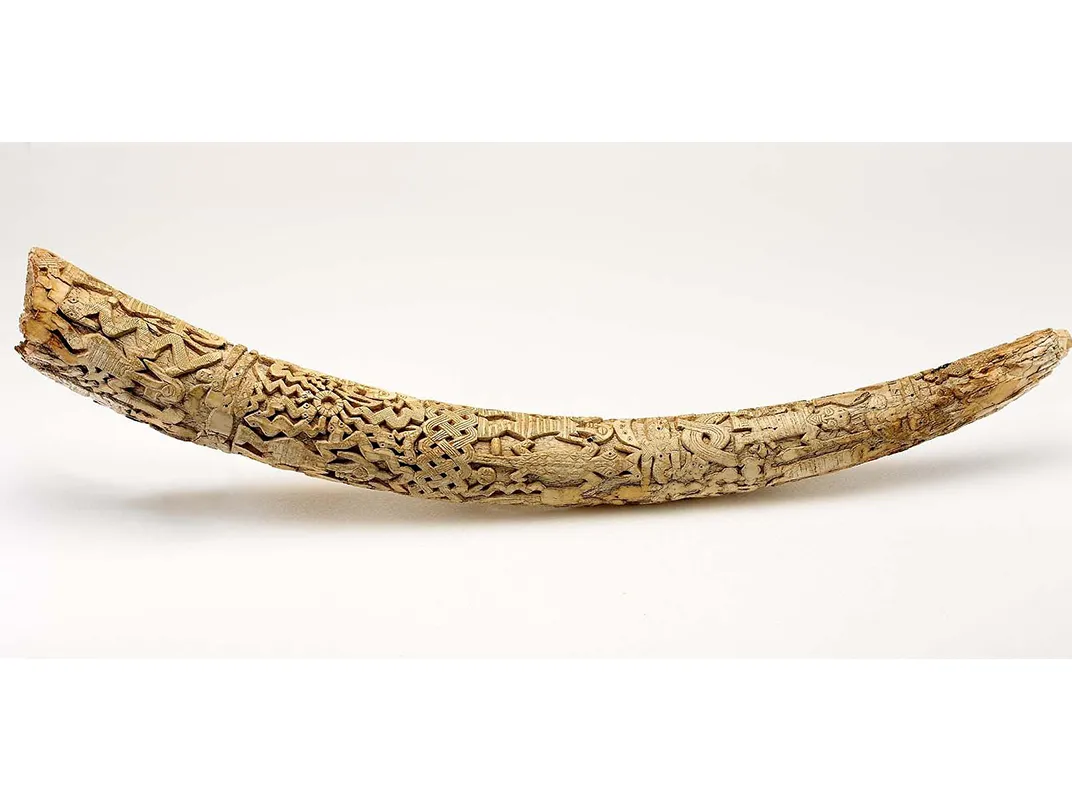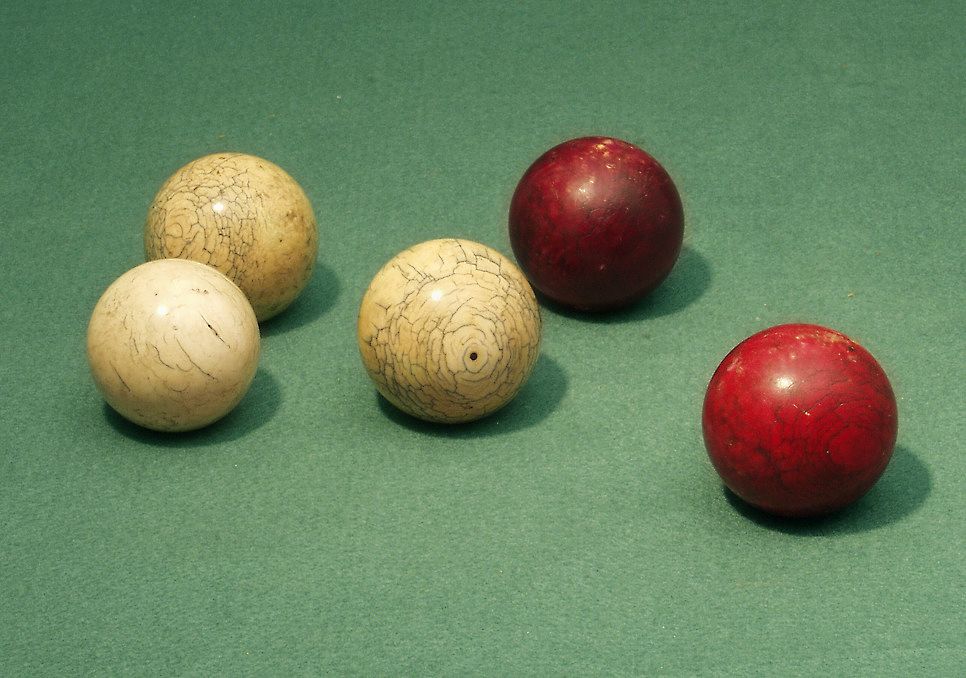Appalled by the Illegal Trade in Elephant Ivory, a Biologist Decided to Make His Own
Faking the stuff of elephant tusks could benefit wildlife conservation and engineering—yet many technical hurdles remain
/https://tf-cmsv2-smithsonianmag-media.s3.amazonaws.com/filer/63/ac/63ac570c-57af-4a98-89a9-6b9b03209fc1/dht0e0.jpg)
When male elephants do battle, they clash at high speeds, locking their tusks together in a show of strength. These elongated incisor teeth are so strong that their wielders often use them to wrestle and fling each other to the ground. But tusks aren’t only for inflicting harm; outside of battle, elephants use them to clear paths through vegetation and even move trees. Most remarkably, each elephant keeps the same set of tusks—each weighing up to 400 kilograms—for its entire life.
To perform these diverse tasks, the stuff that makes up elephant tusks must be hard, strong and tough. This combination of qualities is part of what has made ivory such a coveted element throughout human history, selling at upwards of $2000 a kilogram just three years ago. Historically used in billiard balls, piano keys and even hip replacements, ivory continues to be valued today for jewelry and other luxury objects.
Unfortunately, the value people have attached to elephant ivory has also fueled conflict and been linked to organized crime, perpetuating a bloody trade that harms both human and pachyderm alike.
In the 1970s and 80s, illegal poaching spurred the Convention on International Trade in Endangered Species of Wild Fauna and Flora, or CITES, to include African elephants on its list of protected species including those threatened with extinction. In 1990, CITES enacted the equivalent of a ban on international sales of African ivory. Elephant populations recovered only to be decimated again by a recent surge in poaching in the 2000s. Since then tens of thousands of elephants—up to 60 percent of the population in some areas—have been slaughtered. By some estimates, 50,000 elephants are killed each year.
This bloody trade is what led Fritz Vollrath, a biologist at the University of Oxford, to start thinking about what it would take to create a manmade material that could perform as well as ivory—and thus lessen the demand for a substance which has caused so much harm. At the time, Vollrath was studying the properties of another remarkable material found in nature: spider silk. But he also studied the behavior and migration patterns of elephants, making him all too familiar with the consequences of the ivory trade.
Under the microscope, ivory reveals its molecular structure: a three-dimensional collagen scaffolding filled with hydroxyl apatite minerals and water. Vollrath aimed to understand this distinct makeup well enough to improve upon the plastic-based substitutes that currently exist with a truly “biologically inspired” replica. “We’re still struggling to understand why it’s such a tough material,” Vollrath said. “It combines two kinds of material, mineral and collagen. Neither of them are great materials by themselves, but if you mix them up … it becomes something different.”
But what is that "something different"? For Vollrath, the first step in creating realistic fake ivory is figuring out what real ivory is, exactly. So, using samples of ivory seized as contraband, his research group has carved thin slices—on which the cross-hatched lines characteristic of ivory can be seen—and subjects them to detailed microscopic studies and stress tests. The goal is to understand at fine scales how the structure results in the material’s toughness and beauty.
Still, Vollrath concedes, he has a long way to go.

Consumer demand for ivory began rising in the early 2000s and peaked around 2011, causing major declines in elephant populations all across Africa, says Iain Douglas-Hamilton, a biologist and the head of conservation organization Save the Elephants, of which Vollrath is chairman. “In 2009, things began unraveling with a huge rise in the price of ivory, driven by increase in demand in China, because of increased buying power of ordinary Chinese citizens,” Douglas-Hamilton says. “At the time, there was little awareness of the effects [of the ivory trade on elephant populations]—this has changed radically in the last few years.”
Fortunately, since 2014, the price of ivory has dropped by more than half in anticipation of a Chinese ban on the ivory trade, according to a report by Save the Elephants. Several large, previously legally operating ivory carving factories have already been shut down since the ban went into effect in the final days of 2016. The buying and selling of ivory objects is intended to be completely stopped by the end of 2017, eliminating an estimated 70 percent of the global ivory market.
“There was concern that the existence of ‘legal’ ivory could be used as a smokescreen [for illegal trade],” Douglas-Hamilton said. “This caused the Chinese to shift to idea that the only way to control the trade was to abolish it.”
Vollrath’s focus, therefore, has shifted to the biomedical applications of synthetic ivory. For example, he believes his material could be used in bone or tooth repair, or to update the 19th century practice of using ivory in hip replacements for the age of regenerative medicine. But he’s also still working on unraveling the properties that make ivory so culturally and artistically valuable.
Ivory has historically been used in a variety of cultural economies, from musical instruments to decorative objects. “For the carvers in China, ivory is a very important material,” Vollrath says, referring to Chinese craftspeople who create decorative objects from legally or illegally traded ivory. “Our initial idea was, if we could persuade the carvers to drop their lobbying by giving them a substitute material to carve, this might have an effect on the ivory trade and poaching.” Now that ivory has been banned, he says, engineering a substitute may help keep the craft alive.
Natural ivory also possesses other qualities that are harder to put your finger on. One traditional application has been in the manufacture of musical instruments. Whereas pianos are now manufactured with plastic keys, a small community of musicians who play the shamisen, a traditional three-stringed Japanese instrument used in Kabuki theater and other Japanese folk musical traditions, use ivory parts in the manufacture of their instruments.
These parts are made of ivory stocks already existing in the country, but there are reports of illegal smuggling, says Keisuke Yamada, a graduate student in ethnomusicology who studies the shamisen at the University of Pennsylvania. “Most shamisen masters in Japan prefer [parts] made from ivory,” Yamada says via email. “They say they like its grip; it feels comfortable and absorbs perspiration, which is important for them to keep playing the instrument for hours.”
Although engineering projects are underway to develop alternative materials for shamisen construction, Yamada doubts that shamisen masters will be willing to switch to alternative materials as long as ivory is legally available in the country.
Moreover, even once a material is well-characterized, it will still take significant time and research to translate that knowledge into recreating it. But once we do, the potential is vast. “As we move closer to understanding complex materials like ivory, we can recreate some of their magic in the lab and ultimately engineer novel materials for use in art, science and engineering,” says Markus Buehler, a professor of engineering at the Massachusetts Institute of Technology, via email.
“To move from a biological to an engineered material, it is critical to understand the relationships between structure and function,” says Buehler, who has worked on spider silk but has no connection to the ivory researchers. “It is often hard to actually manufacture a material that mimics the one found in nature.” The key technical challenge for understanding a natural material like ivory, he adds, is to have access to a range of imaging techniques that allow the material to be characterized from the molecular to the macro levels.

In a review article in the journal Nature Materials, Dartmouth engineering professor Ulrike Wegst notes that “mimicking the features of a natural material is not a trivial undertaking.” Despite advances in characterizing biological materials, few have been successfully synthesized due to the challenges of understanding their complexity at multiple scales, she writes. A possible exception is nacre, or mother-of-pearl—which, like ivory, consists of organic and mineral components, and has been closely replicated by human engineers.
“It is indeed possible to engineer biomimetic materials with properties that are akin to their counterparts,” Wegst says via email. “The first questions I would ask are: For which application do you wish to create an ivory-substitute material, and what are the design requirements for that application?... There are numerous pathways, and several could be very exciting indeed.”
Eventually, synthesizing ivory for mass consumption would require making partnerships with industry. But knowledge about ivory's molecular characteristics could be useful to biologists, engineers and conservationists far before then. Vollrath points out that elephant ivory is distinct from other ivories; its internal architecture differs from that of mammoths or narwhals, and differences have been anecdotally reported between the ivories of elephants from different regions and environments.
“It would be interesting to find out whether there’s a historical or evolutionary reason for these differences, and do they have implications for the toughness and the mechanical properties,” Vollrath says.
Better understanding these distinctions could also be useful when it comes to tracking the illegal ivory trade. Vollrath speculates that if there are strong differences between ivories based on environmental or genetic factors, conservationists could use that data to trace the origin of the animal that any seized ivory came from. This could supplement the method of genetically based ivory tracking that Elizabeth Kolbert reported on recently for Smithsonian Magazine, in which researchers match up specific genetic mutations found in ivory with known elephant populations.
Yet not all conservation policy experts agree that adding convincing fake ivory to the market would be a good idea at all. “Synthetic wildlife products that look like the real thing are highly unlikely to reduce demand and may even help to stimulate it,” says Leigh Henry, a senior policy advisor at the World Wildlife Fund, via email. “Additionally, look-alike products can provide a cover for illegal trade and make the job of enforcement officers that much more difficult.”
It gets more complicated. If synthetic ivory were affordable, abundant and viewed by consumers as an acceptable substitute, it could drive down the price of real ivory enough to disincentivize poaching, says Carolyn Fischer, a senior fellow at Resources for the Future who has done academic research on trade in wildlife products. But if the prevalence of fake ivory removed the stigma of possessing real ivory, it could have the opposite effect.
“Ultimately, the net effect depends on whether the abundance of a substitute can drive down prices more than it spurs demand by diminishing the stigma,” Fischer said via email.
Determining the right strategy for combating elephant poaching will necessarily require a combination of efforts from experts across fields. In the meantime, Vollrath's work to pinpoint what makes ivory so unique could benefit some of those other fields, from engineering to design. One often-cited plus of wildlife conservation, after all, is to preserve the chemical, physical and engineering innovations honed by evolution so that humans can understand and adapt them for their uses.
As Buehler says of collaborations between biologists and engineers: “It is a worthwhile focus, I believe, and there can be many mutual benefits."